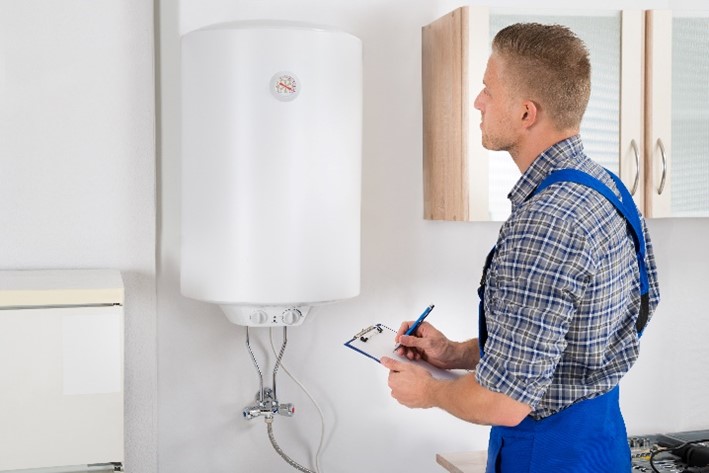Everybody is bound to have their own unique thinking on the subject of What Kind of Maintenance Do Water Heaters Need?.

Hot water is important for day-to-day comfort, whether it's for a refreshing shower or cleaning dishes. To guarantee your hot water system runs effectively and lasts longer, routine upkeep is vital. This post provides functional tips and insights on how to preserve your home's warm water system to stay clear of disturbances and costly fixings.
Introduction
Preserving your home's warm water system might seem overwhelming, however with a few basic steps, you can ensure it runs efficiently for many years ahead. This overview covers everything from comprehending your warm water system to DIY upkeep tips and understanding when to call professional assistance.
Value of Maintaining Your Hot Water System
Routine upkeep not only extends the life expectancy of your hot water system but additionally guarantees it operates effectively. Disregarding maintenance can lead to reduced efficiency, higher energy expenses, and even early failing of the system.
Indicators Your Hot Water System Requirements Maintenance
Understanding when your warm water system requires focus can prevent major problems. Watch out for indications such as irregular water temperature level, weird sounds from the heating system, or rusty water.
Comprehending Your Hot Water System
Before diving into maintenance tasks, it's valuable to comprehend the fundamental parts of your warm water system. Typically, this consists of the hot water heater itself, pipelines, anode poles, and temperature level controls.
Monthly Upkeep Tasks
Normal month-to-month checks can aid capture small problems before they intensify.
Flushing the Water Heater
Flushing your hot water heater removes debris buildup, boosting effectiveness and lengthening its life.
Checking and Changing Anode Rods
Anode rods protect against rust inside the tank. Evaluating and replacing them when broken is vital.
Checking and Changing Temperature Settings
Changing the temperature setups makes sure optimal efficiency and safety and security.
DIY Tips for Upkeep
You can perform numerous upkeep tasks on your own to keep your warm water system in leading condition.
Checking for Leakages
On a regular basis examine pipes and links for leakages, as these can result in water damage and higher expenses.
Examining Stress Relief Valves
Examining the stress safety valve ensures it operates properly and prevents too much pressure buildup.
Protecting Pipes
Protecting hot water pipelines reduces warmth loss and can conserve energy.
When to Call a Specialist
While do it yourself upkeep is helpful, some issues call for expert proficiency.
Complicated Issues Needing Specialist Assistance
Instances include significant leaks, electric troubles, or if your hot water heater is consistently underperforming.
Routine Specialist Maintenance Perks
Specialist upkeep can include detailed evaluations, tune-ups, and making sure compliance with safety and security standards.
Final thought
Routine upkeep of your home's warm water system is vital for efficiency, durability, and expense financial savings. By following these suggestions and recognizing when to look for professional aid, you can ensure a reputable supply of warm water without unexpected disruptions.
How to Maintain an Instant Hot Water Heater
- Before tinkering with your hot water heater, make sure that it’s not powered on. You also have to turn off the main circuit breaker and shut off the main gas line to prevent accidents. Also turn off the water valves connected to your unit to prevent water from flowing into and out of the appliance.
- 2. When you’re done, you have to detach the purge valves’ caps. These look like the letter “T” and are situated on either side of the water valves. Doing so will release any pressure that has accumulated inside the valves while at the same time avoid hot water from shooting out and burning your skin.
- 3. When the purge valves’ caps are removed, you have to connect your hosing lines to the valves. Your unit should have come with three hoses but if it didn’t, you can purchase these things from any hardware or home repair shops. You can also get them from retail stores that sell water heating systems. Read the user’s manual and follow it to complete this task properly. When the hosing lines are connected, open the purge port’s valves.
- 4. You should never use harsh chemical cleaners or solutions when cleaning your unit. Make use of white vinegar instead. It should be undiluted and you’ll probably use about 2 gallons.
- 5. Now flush your water heater. This task should probably take about 40 minutes. We can’t give you specific directions for this because the procedure is carried out depending on the type, model and brand of your heater. With that being said, refer to the user’s manual.
- 6. When you’re done draining the unit, you have to turn off the purge port valves again. Remove the hosing lines that you earlier installed on each of the water valves. Put the valve caps (purge port) back in their respective places and be very careful so as not to damage the rubber discs that are found inside these caps.
- 7. Now that everything’s back in place, check your user’s manual again to find out how to reactivate your water heating system.
- 8. Once it is working, turn one of your hot water faucets on just to let air pass through the heater’s water supply pipes. Leave the tap on until water flows smoothly out of it.
https://www.orrplumbing.com/blog/2014/september/how-to-maintain-an-instant-hot-water-heater/

Do you like reading up on Tips on Maintaining a Water Heater? Make a review down below. We would be happy to know your insights about this piece. We are looking forward that you visit us again before long. Sharing is good. Helping people is fun. Many thanks for taking the time to read it.
This Post
Comments on “Maintaining Your Home's Hot Water System: Important GuidelinesEssential Guidance on Maintaining Your Home's Hot Water SystemStraightforward Ways to Maintain Your Home's Hot Water System Effectively”